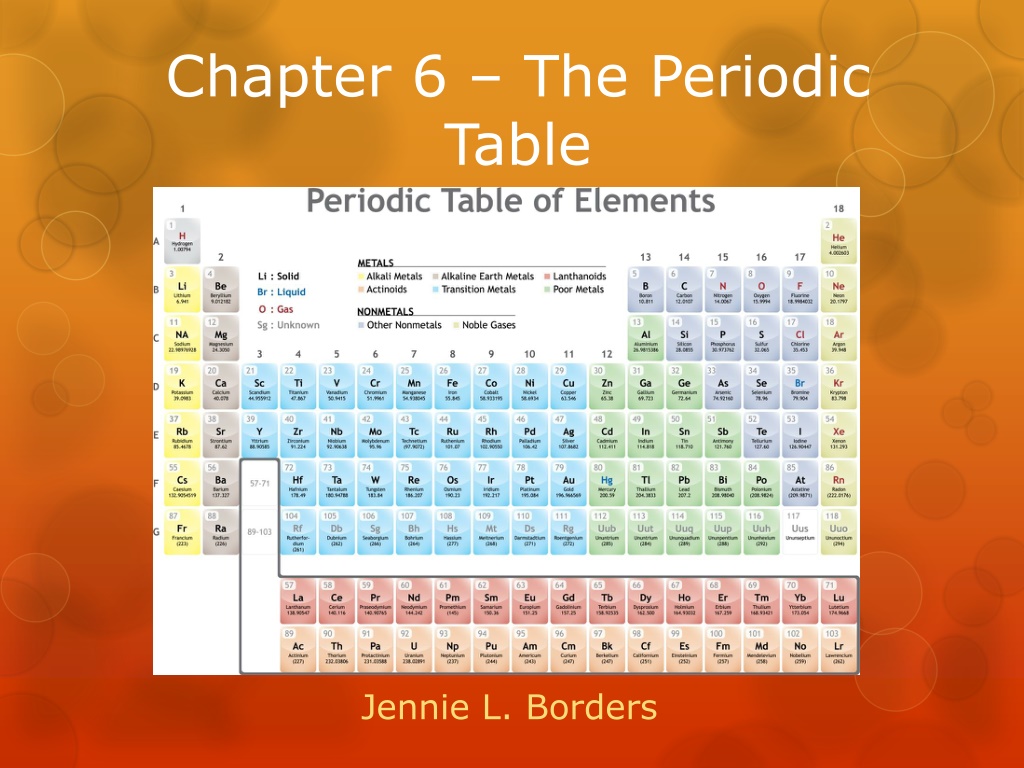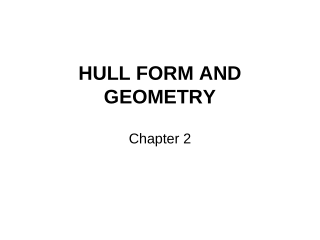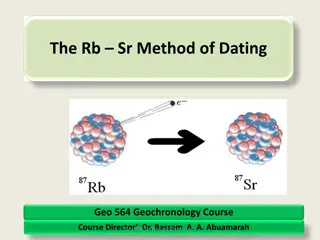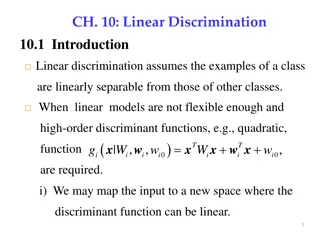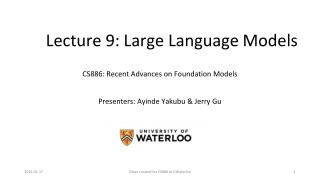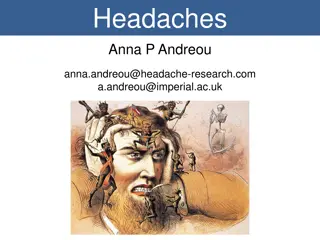Understanding the Periodic Table: From Mendeleev to Modern Classification
Organizing elements based on their properties led to the development of the periodic table by Mendeleev with predictions that have stood the test of time. The modern periodic table arranges elements by increasing atomic number, showcasing repeating patterns of properties. It categorizes elements into metals, nonmetals, and metalloids based on characteristic traits, providing a comprehensive framework for understanding the behavior of elements.
Download Presentation
Please find below an Image/Link to download the presentation.
The content on the website is provided AS IS for your information and personal use only. It may not be sold, licensed, or shared on other websites without obtaining consent from the author. Download presentation by click this link. If you encounter any issues during the download, it is possible that the publisher has removed the file from their server.
Presentation Transcript
Chapter 6 The Periodic Table Jennie L. Borders
Section 6.1 Organizing the Periodic Table Chemists used the properties of elements to sort them into groups.
Mendeleev Mendeleev is credited with creating the first useful periodic table. He arranged the elements in order of increasing atomic mass. He also put elements with similar properties in the same group.
Mendeleev When he finished, there were blanks in his periodic table. Since he arranged his periodic table based on properties, he predicted the properties of elements that had not been discovered. When the elements were discovered, his predictions were right.
Modern Periodic Table The modern periodic table is arranged in order of increasing atomic number. Elements in the same group have similar properties. Elements in the same period have a repeating set of properties. This is referred to as the periodic law.
Metals, Nonmetals, and Metalloids The periodic table can be broken up into metals, nonmetals, and metalloids.
Metals Properties of metals include: Good conductors Shiny Solid (except mercury) Ductile can be pulled into wires Malleable can be hammered into sheets
Nonmetals Properties of nonmetals include: Tend to be gases Poor conductors (except carbon) Brittle Dull
Metalloids Metalloids generally have some of the properties of metals and nonmetals.
Section 6.1 Assessment 1. What property did Mendeleev use to organize his periodic table? 2. How are elements arranged in the modern periodic table? 3. Name the three broad classes of elements. 4. Which of these sets of elements have similar physical and chemical properties? a. oxygen, nitrogen, carbon, boron b. strontium, magnesium, calcium, beryllium c. nitrogen, neon, nickel, niobium
Section 6.1 Assessment 5. Identify each element as a metal, metalloid, or nonmetal. a. gold b. silicon c. sulfur d. barium 6. Name two elements that have properties similar to those of the element sodium.
Electron Configuration in Groups Elements in the same group have similar properties because they have similar electron configurations.
Section 6.2 Assessment 1. Into what four classes can elements be sorted based on their electron configuration? 2. Why do the elements potassium and sodium have similar chemical properties? 3. Which of the following elements are transition metals: Cu, Sr, Cd, Au, Al, Ge, Co? 4. How many electrons are in the highest occupied energy level of a Group 15 element?
Section 6.3 Periodic Trends Atomic Radius the radius of an atom. In general, the atomic radius increases as you move down a group and decreases as you move across a period.
Atomic Radius The atomic radius increases going down a group because larger energy levels are added with each row. The atomic radius decreases going across a period because electrons are added to the same energy level, but protons are added to the nucleus which pull the electron in closer.
Ions An ion is an atom with a charge. An atom has a charge when it gains or loses electrons. An anion is a negative ion (gains electrons). A cation is a positive ion (loses electrons).
Charges You can tell the charge of an element based on which group it is in on the periodic table (except for transition metals).
Ionization Energy Ionization energy is the energy needed to remove an electron from an atom. In general, ionization energy decreases as you move down a group and increases as you move across a period.
Ionization Energy Ionization energy decreases as you move down a group because larger energy levels are added which are farther from the nucleus. Since the electrons are far from the nucleus, it takes less energy to remove one. Ionization energy increases as you move across a period because the nucleus gets stronger, so it takes more energy to remove an electron.
Ionic Size Ionic radius is the radius of an ion. Cations are smaller than the parent atom. Anions are larger than the parent atom.
Ionic Size In general, ionic size increases as you move down a group because larger energy levels are added.
Ionic Size Ionic size generally decreases across the cations, then increases as you move to the anions. As you move across the anions the size decreases again. This is due to the increased strength of the nucleus and the loss or gain of electrons.
Electronegativity Electronegativity is the ability of an atom to attract more electrons. In general, electronegativity decreases as you move down a group and increases as you move across a period.
Electronegativity Electronegativity decreases as you move down a group because larger energy levels are added that are farther from the nucleus so the atom cannot attract electrons as well. Electronegativity increases as you move across a period because the nucleus is stronger and can attract more electrons.
Section 6.3 Assessment 1. How does atomic size change within groups and across periods? 2. When do ions form? 3. What happens to first ionization energy within groups and across periods? 4. Compare the size of ions to the size of the atoms from which they form. 5. How does electronegativity vary within groups and across periods?
Section 6.3 Assessment 6. Arrange these elements in order of decreasing atomic size: sulfur, chlorine, aluminum, and sodium. Does your arrangement demonstrate a periodic trend or a group trend? 7. Which element is each pair has the larger first ionization energy? a. sodium, potassium b. magnesium, phosphorus
